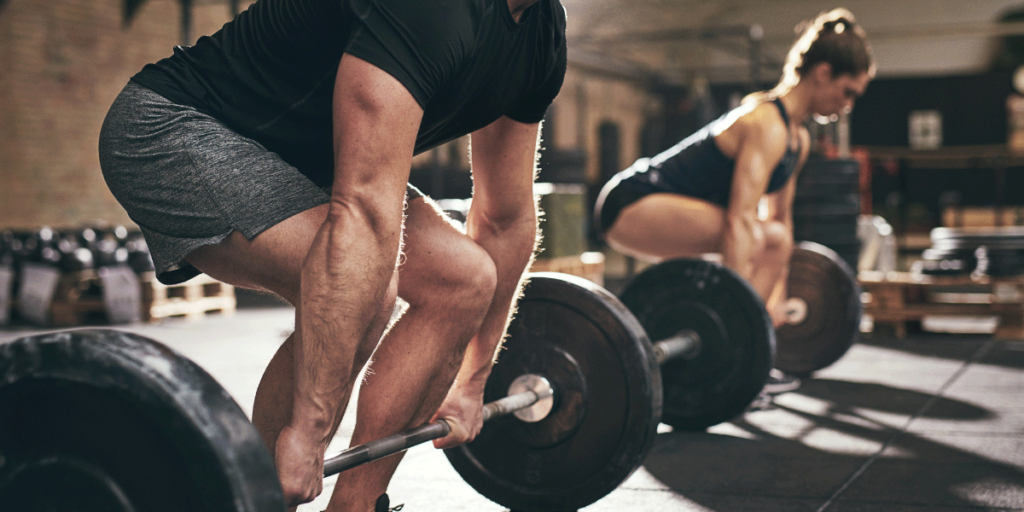No products in the cart.
Posterior Chain Exercises Explained

In the world of fitness and physique, we tend to have a myopic focus on our mirror muscles, or the “show muscles”, and for good reason. While lifting and fitness can be tremendous for our health, in all honesty, a great percentage of gym-attendees are as worried about their aesthetics as they are their gains or PR’s. However, in our endless pursuit of glorious calves, quads, abs and pecs, we have a tendency to neglect or possibly attribute less importance to the muscles that maybe most important, specifically our posterior chain. If the aforementioned muscles are our “show” muscles, most of whom reside in our anterior (front), then the posterior chain of muscles would be our “go” muscles, as in our power, strength and explosiveness will be determined by the strength of our posterior muscles. In addition, the posterior chain musculature will provide the balance needed not only for an excellent and aesthetic physique both front and back, but it will allow lifters to train their show muscles longer by preventing many of the overuse injuries that tend to follow lifters whose main training emphasis is on the mirror rather than their overall function.
Anterior vs posterior chain muscles
To create balance in these muscle groups, common sense would dictate a one to one ratio of working anterior and posterior chain muscles. However, anyone who has been to a commercial gym can testify that most lifters spend an inordinate amount of time already on bench press and squats, thus when creating a training program, it is important to use something closer to a 3:2 or even a 2:1 ratio of posterior to anterior training volume. A simpler way to approach this may be to group these into movement patterns. Almost all of the posterior chain muscles are primarily used in “pull” exercises; conceptually a pull exercise is any motion pulling the weight closer to you. This might include deadlifts, rows, or pull-ups. Alternatively, anterior muscles are primarily “push” exercises, or exercises that push the resistance away from you, such as bench press, overhead press, and squats to name a few. As you may have already gathered, many of these motions are exact opposites of each other or may be viewed as agonist-antagonistic. It is vital to maintain a balance of those qualities as we’ve discussed. An example of this in a workout using a 2:1 ratio as previously discussed might be 3 sets of 8 reps on bench press, followed by 3 sets of barbell rows, followed by 3 sets of seated cable rows, thus creating a two to one push to pull ratio.
We’ve mentioned that building the posterior chain can be vital to preventing potential injuries that arise from overtraining a particular area, however, it also can help to fix or maintain correct posture, thus serving to help a potentially chronic lifetime issue that leads to a host of injuries. When our pecs and quads are overdeveloped as compared to our hamstrings or rhomboids, it tends to draw our shoulders in and down, and pulls our hip flexors down leading to our pelvis tilting back. These issues over a long timeframe lead to a hunched forward posture in the thoracic and cervical spine and a rounded, inflexible lumbar spine, and if these issues persist over time poor posture leads to further issues such as herniated and bulging discs, rotator cuff and AC joint inflammation, and more, all of which make it very hard to continue to bench and squat.
Building a correct posture
To help correct posture, balance anterior chain musculature and all of the other benefits described from building a strong posterior chain, there are quite a few different exercises you can go with. That being said, there are three that we’ll recommend that offer the best bang for your buck and will help you build quickly; the Romanian or stiff-legged deadlift, inverted rows, and pull ups. The Romanian deadlift, more easily referred to as an RDL, is a hip hinge motion with a barbell, bending at the waist to lower the bar to the floor and back while keeping the back braced and flat. It is arguably the best developer of the posterior chain as it works the hamstrings, glutes, erector spinae and traps/rhomboids when performed correctly. It also can be done on one leg among other variations, and provides a great compliment or balance to squats. Inverted rows might be better described as upside-down pushups; with a barbell securely in the rack, hang upside down with the feet on the floor or elevated on a bench or box, and pull your chest to the bar, making sure to squeeze the glutes and the keep body rigid to pivot off the heels. Inverted rows are arguably the best exercise for training the antagonist muscles to bench press. Finally, pull ups are not only the perfect pairing with overhead press but also are the best and simplest way to build and maintain the ideal aesthetic of a wide back tapering to a thin waist. When possible use different variations as well such as neutral grip or isometric holds.
In conclusion, the best strategy in any medium for long term success is consistency over time. In fitness and lifting, this requires a balanced approach to maintain symmetry and avoid overuse injuries. As we’ve covered, most lifters prioritize the mirror exercises such as bench press and squats, however neglecting work on the posterior chain will lead to injuries in the long term and losses in training consistency. Bottom line, to improve your aesthetics or “show” muscles, put in the work on the posterior chain and build your “go” muscles!!
